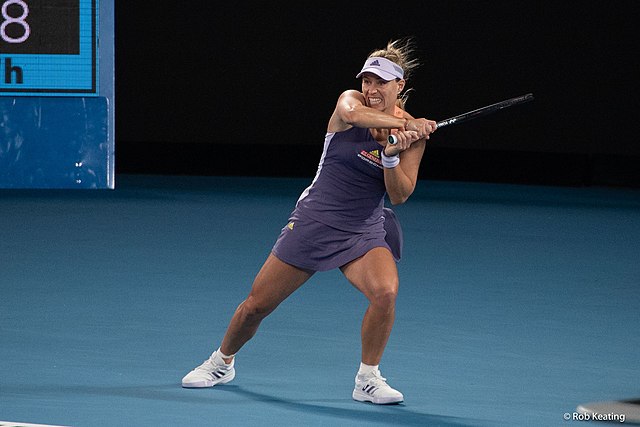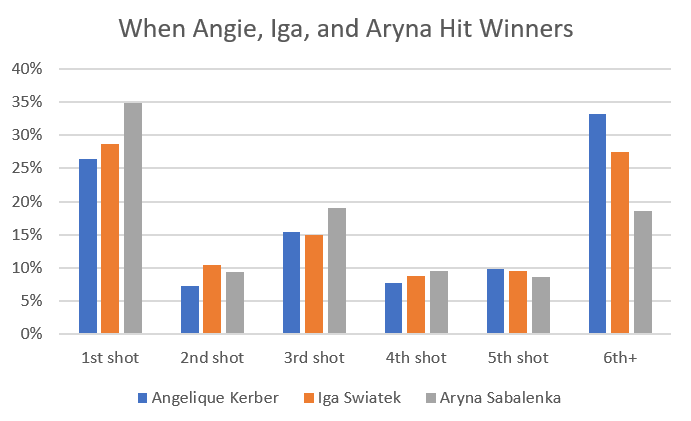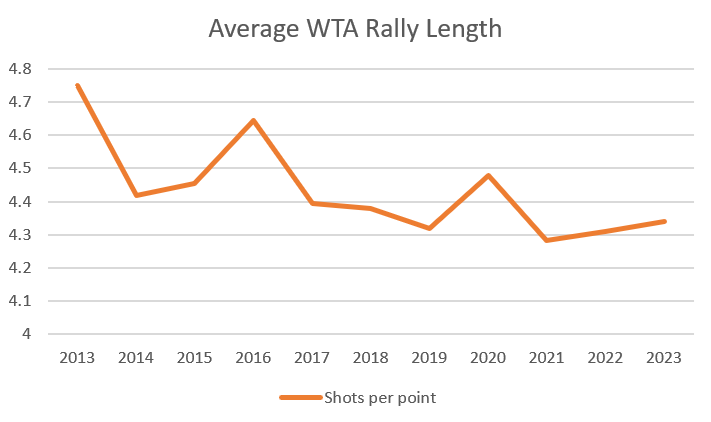
Angelique Kerber’s return to the tour has, so far, been a rocky one. She began Germany’s United Cup campaign with a narrow defeat to Jasmine Paolini, in which the Italian earned 21 break points against the German’s serve. Kerber took a set from the free-swinging Caroline Garcia but lost in three. Today, Maria Sakkari blew her off the court, winning nine games in a row before Kerber got on the board and split the remaining six.
The United Cup, in its new design, is not an easy place to make a comeback: The German faced top-30 players all three rounds. (Compare that to the tour event in Brisbane, where fellow returnee Naomi Osaka scored an opening-round victory against a player ranked 83rd.) Kerber surely didn’t expect to dominate immediately. It’s hard to get rolling again after an 18-month layoff, and she hasn’t been a truly elite player since early 2019. She turns 36 years old this month, a tough age even for players with three majors to their credit.
The Garcia match, in particular, highlighted another dimension of the challenge. The tour that Kerber rejoins is different from the one where she collected so many laurels. Angie is the very definition of a counterpuncher, a clever defender who uses anticipation and racket control to convert her opponent’s pace into winners of her own. It’s tough to counterpunch against someone like Garcia, who aims to end the point with nearly every shot.
The reckless Frenchwoman is hardly alone. Based on data from the Match Charting Project, here is the average rally length on the WTA tour since 2013:
It looks a bit fluky, but it’s noteworthy to find a peak in 2016, Kerber’s best year. Rally length has been essentially flat since 2021, perhaps since 2019 if we set aside the Covid-affected 2020 season. The German is plenty familiar with the landscape, having competed on tour until Wimbledon in 2022, but she developed her game back when the power of Serena Williams was an outlier. Now, Serena’s late-career bashing is the model for a new generation.
There are a number of ways to illustrate the trend. While the year-to-year differences are minor, the arrows all point in the same direction. In 2016, 49.6% of points were decided in three shots or less. Last year, it was 53.0%. (In 2021 and 2022, it was a bit higher still.) At Kerber’s peak, nearly 24% of points lasted at least seven strokes. Last year that figure had declined to 20.8%.
This is probably worse news for someone like Caroline Wozniacki than it is for Kerber. Woz keeps points alive and waits for errors, skills that Garcia (or Aryna Sabalenka, or Elena Rybakina, or dozens more players she might draw in the first round of the Australian Open) render meaningless. While Angie isn’t going to pile up aces–she’s hit a grand total of two in three United Cup matches–she is fully capable of redirecting a serve for a return winner, as she did a couple of times against Sakkari. Still, the shorter the point, the less likely that Kerber finds an opportunity to work her magic.
Throughout her career, the German lefty has rarely had a problem picking spots to end points with winners or forced errors. Match Charting data shows that 6% of her groundstrokes go for winners, right in line with tour average.
The catch, though, is when she hits them. Kerber is one of 58 players for whom the Match Charting Project has recorded at least 2,000 winners and forced errors since 2013. Only four of those players unleash their winners later in the rally. The average shot number of Kerber’s point-enders is 4.9–bad news in an era when nearly two-thirds of points are finished in four shots or less.
Here are the twelve players in the dataset whose winners occur latest in the rally:
Player Avg Winner Shot# Daria Kasatkina 5.1 Viktorija Golubic 5.0 Yulia Putintseva 5.0 Carla Suarez Navarro 4.9 Angelique Kerber 4.9 Sloane Stephens 4.9 Agnieszka Radwanska 4.9 Simona Halep 4.8 Svetlana Kuznetsova 4.7 Anastasija Sevastova 4.6 Caroline Wozniacki 4.6 Su Wei Hsieh 4.6
This isn’t a table where you want to find your name north of Wozniacki’s. It’s possible to survive on today’s tour playing this way, as Daria Kasatkina has proven, but it is much less likely to translate into a major title. Wimbledon champ Marketa Vondrousova didn’t miss the list by much, coming in at 4.4, but her aggression varies wildly from one match to another. Iga Swiatek and Coco Gauff appear closer to the middle of the pack, at 4.2, and Aryna Sabalenka ranks as the fourth most aggressive of the 58, at 3.4.
At the risk of belaboring the point, here’s another way of seeing the difference between Angie’s style and the brands of tennis that currently top the rankings. The following chart shows what percent of Kerber’s winners (and forced errors) happen at each point in the rally, compared to the same figures for Swiatek and Sabalenka:

The “1st shot” and “6th+” columns are virtual mirror images of each other. Even that understates the difference between the veteran and the two youngsters, because a point-ending serve from Kerber is more likely to be at least partially the fault of the returner–those errors are conventionally scored as forced regardless of the strength of the serve.
I don’t want to say that Kerber can’t succeed on her return to the circuit, but it’s clear that she faces a challenge. The tennis world of the mid-2010s is long gone, and even if she regains the form that took her to number one in 2016, it may not give her the same results in 2024. A new era requires a new Angie; we’ll see if she can produce one.
* * *
Subscribe to the blog to receive each new post by email:
